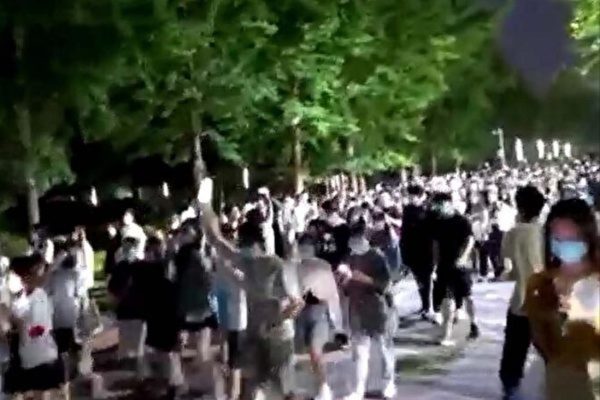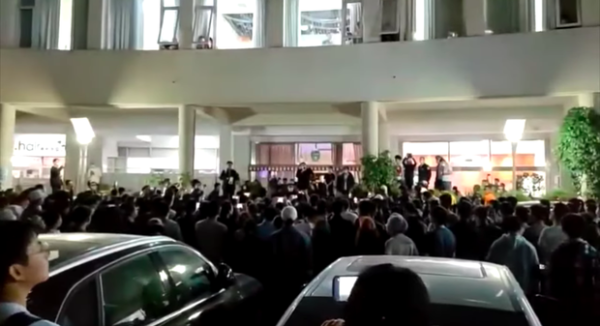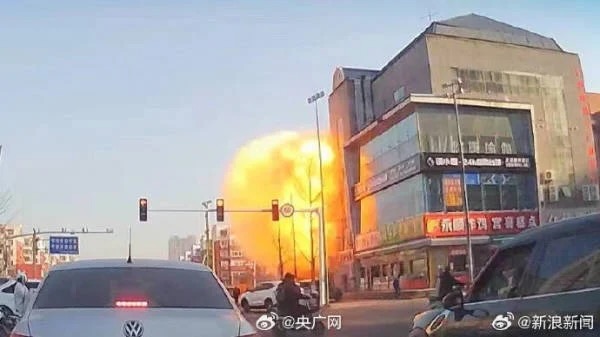After undergoing several months of lockdowns, movement restrictions and travel bans, authorities in China have finally lifted some of the country’s draconian “zero-COVID” policies that have plagued the world’s most populous nation and second largest economy since mid-March.
But this is complicated by the fact that many communities remain under some degree of recurring lockdown, with thousands of people continuing to be kept in mass quarantine camps, and mass protests being sparked across university and college campuses throughout the country.
READ MORE ON CHINA’S CORONAVIRUS SITUATION:
- Lockdowns Come Back to Shanghai and Beijing as Chinese Authorities Discover New COVID Cases
- Chinese Authorities to Locked Down Shanghai Residents: ‘Stop Asking Why,’ Beijing Introduces Daily Mass Testing
- Despite Ban, Hongkongers Gather to Mourn Tiananmen Massacre
- COVID-19, Lockdowns Have Many Hongkongers Suffering From PTSD: Study
The restrictions have also fueled a myriad of tragic events with some people reportedly dying while awaiting medical attention outside hospitals for anything other than COVID, and others seen jumping off rooftops as they reach their breaking point or run out of food and essentials during the prolonged lockdowns.
This, coupled with blanket digital surveillance and censorship has resulted in “signs of mass discontent,” Radio Free Asia (RFA) reported. Following the heels of the 33rd anniversary of the Tiananmen student protests, the US-based outlet has raised the issue of whether another mass protest could be developing amidst frustrated residents in China.
On May 30, Shanghai entrepreneurs penned and cosigned an open letter addressed to the Chinese Communist Party (CCP) upon the authorities’ request for businesses to resume production and operations. The letter said that in response to the excesses of the “zero-COVID” policies, businesses should “lie flat” in protest, rather than resume work.
Success
You are now signed up for our newsletter
Success
Check your email to complete sign up
The term “lying flat,” or tang ping, is known as a form of passive resistance or protest by younger generations in the face of what is seen as fierce competition in education, grueling work hours, and limited prospects in modern Chinese society. It essentially means doing the bare minimum, and striving for nothing more than what is absolutely needed in order to get by.
The entrepreneurs not only called upon the Party to investigate and punish officials who abused their power during the lockdowns, but even demanded the release of all political prisoners and to begin a process of political reform at the 20th Party Congress slated to take place at the end of the year. The event, widely considered the most important political event of the decade, will determine whether incumbent Chinese leader Xi Jinping will manage to secure a third five-year term in office.
POLITICS IN THE PEOPLE’S REPUBLIC:
- Communist Politics Are Bringing Disaster to China–And Xi Jinping
- China Fights Uphill Battle to Rescue Its Economy While Keeping ‘Zero-COVID’
- Xi Prepares Chinese Military for ‘Non-War’ Operations
- Xi vs. Li? Analyzing Political Rumors About a ‘Split’ Between China’s President and Premier
The letter also called on the government to overturn the guilty verdicts placed against real estate entrepreneur Ren Zhiqiang and agriculture mogul Sun Dawu, as well as holding officials and police officers accountable for “violating the law and disregarding public opinion.”
‘[Protests] sparked by particular real-life problems’
Wang Juntao, U.S.-based chairman of the China Democracy Party (CDP), an organization that is banned in China, told RFA that protests are likely to start forming during this politically sensitive time.
“From my experience of the student movements of the 1980s, they were all sparked by particular real-life problems,” Wang said. “They started slowly, in dribs and drabs.”
“It was hard at first, but then the students started to see their own strength, and it got easier and easier as more students joined them,” he said, referring to the recent student protests seen at different universities and campuses across China.
Last week, authorities also re-tightened restrictions after a handful of positive cases were detected in the country’s most populated cities of Beijing and Shanghai. The two metropolises, home to a combined population of almost 50 million people, were again subjected to lockdowns in some districts — along with mass testing, and movement curbs.
Compounded frustrations
A Shanghai resident going by the pseudonym Ceausescu (the infamous leader of communist Romania, who ended up being executed by his own troops), told RFA that the lockdowns had likely pushed a lot of people to think about the political system that was confining them to their homes.
“Most people were locked up at home, and they couldn’t even buy food for a while at first, so they had to think about it three times a day,” he said. “Normally, people from Shanghai, people in the middle classes, wouldn’t have to think about such things … they would definitely have felt that their rights had been violated.”
The deprivation of personal freedom, loss of control over their own economic activities, and the lack of access to basic rights such as food safety and medical attention may have triggered a lot of people — particularly the younger generations — to start thinking about politics, Ceausescu said.
“I think if young people are unable to go about their lives in peace, they will definitely stand up,” he told RFA.
Student anti-lockdown protests ‘eerily reminiscent’ of Tiananmen
Protests involving hundreds of students have also sprung up at university campuses in Beijing and Tianjin following months of restrictions imposed on China’s higher education institutions. Similar protests were also seen at the Wuhan University of Science and Technology as well as in the Universities of Jilin and Sichuan back in March.
Jilin University saw over 6,000 students confined to their school dorms in mid-March after a cluster of positive cases were detected on campus. The situation was so chaotic and dire that some students reportedly wrote SOS letters begging their parents to come rescue them, and said their friends who had tested positive were only given a few painkillers and told to “deal with it by themselves.”
The scenes at Tianjin University, Beijing International Studies University and Beijing Normal University were “eerily reminiscent” of the early stages of the 1989 student movements — which culminated in a military crackdown, and saw Chinese soldiers and tanks killing thousands of unarmed civilians involved in the protests.


Although the Chinese regime claims that around 200 civilians and several dozen soldiers lost their lives during what is termed a “violent riot,” most estimates put the number of dead in the thousands. The exact number of casualties from the Tiananmen Square massacre is unknown as the CCP has been known to conceal the release of accurate statistics.














